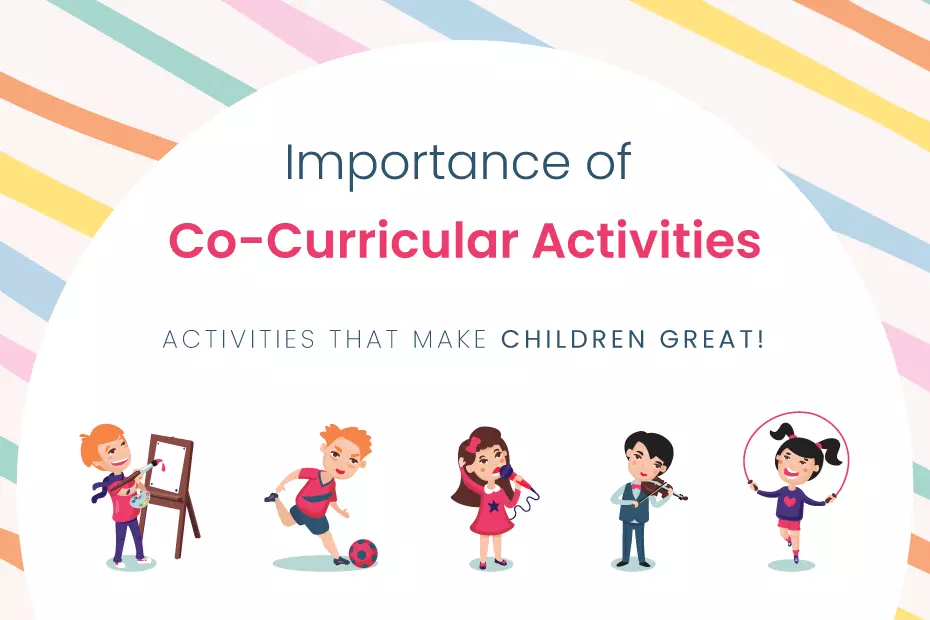In the ever-evolving landscape of education, the significance of student involvement in clubs and extracurricular activities in school cannot be overstated. These activities, ranging from academic clubs to sports teams and cultural organizations, play a pivotal role in shaping the holistic development of students.
Benefits of Joining Clubs and Extracurricular Activities in school:

Academic Benefits:
Participating in clubs and extracurricular activities in school goes beyond the conventional classroom setting, offering students a platform to enhance their academic prowess. Improved time management is a natural outcome of juggling academic responsibilities with extracurricular commitments.
Students learn to prioritize tasks efficiently, a skill that proves invaluable not only during their academic journey but also in their future professional lives.
Moreover, engagement in diverse extracurricular activities in school exposes students to a broad spectrum of subjects beyond their core curriculum. Academic clubs specializing in areas such as science, literature, or mathematics provide a deeper understanding of these subjects, fostering a love for learning that transcends the confines of the classroom.
Personal Development:
One of the most significant advantages of joining clubs and activities is the opportunity for personal development. Students acquire and hone a variety of skills that are not only applicable to their academic pursuits but also crucial for personal and professional success.
Participation in clubs often involves teamwork and collaboration, nurturing essential interpersonal skills. Leadership qualities are cultivated through positions of responsibility within clubs, be it as a team captain or a committee head. Communication skills are refined through interactions with fellow members, mentors, and, in some cases, public presentations.
Perhaps equally important is the boost in self-confidence that accompanies active involvement in extracurricular activities. Students discover their capabilities, overcoming challenges and setbacks. This newfound confidence extends beyond the specific activity, positively impacting various aspects of their lives.
Social Benefits:
Clubs and extracurricular activities in school serve as fertile grounds for the cultivation of social connections. The shared interests that bring individuals together within these groups lay the foundation for lasting friendships. These social networks contribute significantly to a student’s sense of belonging and overall well-being.
Furthermore, participation in clubs exposes students to diversity, fostering an inclusive environment where individuals from various backgrounds come together.
This exposure is invaluable in preparing students for a globalized world, teaching them to appreciate and work with individuals of different cultures, perspectives, and experiences.
Career Advantages:
The benefits of joining clubs and extracurricular activities in school extend well into the professional realm. Actively participating in these activities can significantly bolster a student’s resume, making them stand out to potential employers.
Extracurricular involvement provides a tangible demonstration of a student’s skills and interests. Leadership roles within clubs showcase a proactive attitude and the ability to take initiative, qualities highly sought after in the professional world.
Moreover, the skills acquired in extracurricular activities in school, such as teamwork, time management, and effective communication, are directly transferable to the workplace.
Beyond resume-building, clubs and activities offer students the opportunity to explore their career interests. Whether through internships facilitated by the club or exposure to professionals in the field during events and workshops, students can gain valuable insights into potential career paths.
Tips for Choosing and Participating in Clubs and Activities:

Identifying Personal Interests:
Choosing the right club or activity begins with self-reflection. Students should identify their interests, passions, and long-term goals. Joining a club aligned with one’s interests not only enhances the overall experience but also ensures sustained engagement.
Assessing Time Commitments:
While participation in extracurricular activities in school is beneficial, it’s essential to strike a balance. Students should assess the time commitments associated with various clubs and activities, considering their academic workload and personal responsibilities. Opting for activities that align with available time and energy prevents burnout and allows for a more fulfilling experience.
Balancing Academics and Extracurriculars:
Maintaining a balance between academic responsibilities and extracurricular involvement is crucial. Effective time management is key to succeeding in both realms. Establishing a schedule, prioritizing tasks, and seeking support when needed can help students navigate the dual demands of academics and extracurricular activities.
Setting Realistic Goals:
Setting realistic goals ensures a positive and productive experience in clubs and activities. Whether aiming for a leadership position, skill development, or networking opportunities, clear goals provide direction and motivation throughout the journey.
Overcoming Challenges:

Time Management Strategies:
Challenges may arise, particularly in managing time effectively. Implementing time management strategies, such as creating a weekly schedule, breaking tasks into manageable parts, and setting deadlines, can significantly alleviate these challenges.
Seeking Support from Peers and Mentors:
Students should not hesitate to seek support from peers and mentors. Collaborating with fellow club members and seeking guidance from experienced mentors can provide valuable insights and help overcome obstacles.
Prioritizing Activities:
In situations where conflicting priorities arise, it becomes essential to prioritize activities based on their significance and impact. This involves assessing the immediate and long-term benefits of each commitment and making informed decisions.
Success Stories:
To further emphasize the benefits of joining clubs and extracurricular activities in school. Testimonials from students who have experienced personal and professional growth through their club participation serve as inspiring examples.
Conclusion:
In conclusion, the benefits of joining clubs and extracurricular activities in school are vast and multifaceted. From academic enrichment and personal development to social connections and career advantages, these activities contribute significantly to a student’s overall growth and success.
The tips provided offer practical guidance for students contemplating participation, ensuring a meaningful and balanced experience. As students embark on this journey, they not only enhance their skills and knowledge but also contribute to a vibrant and dynamic educational community.
The value of clubs and extracurricular activities in school extends far beyond the confines of the campus, preparing students for the challenges and opportunities that await them in the broader spectrum of life.









